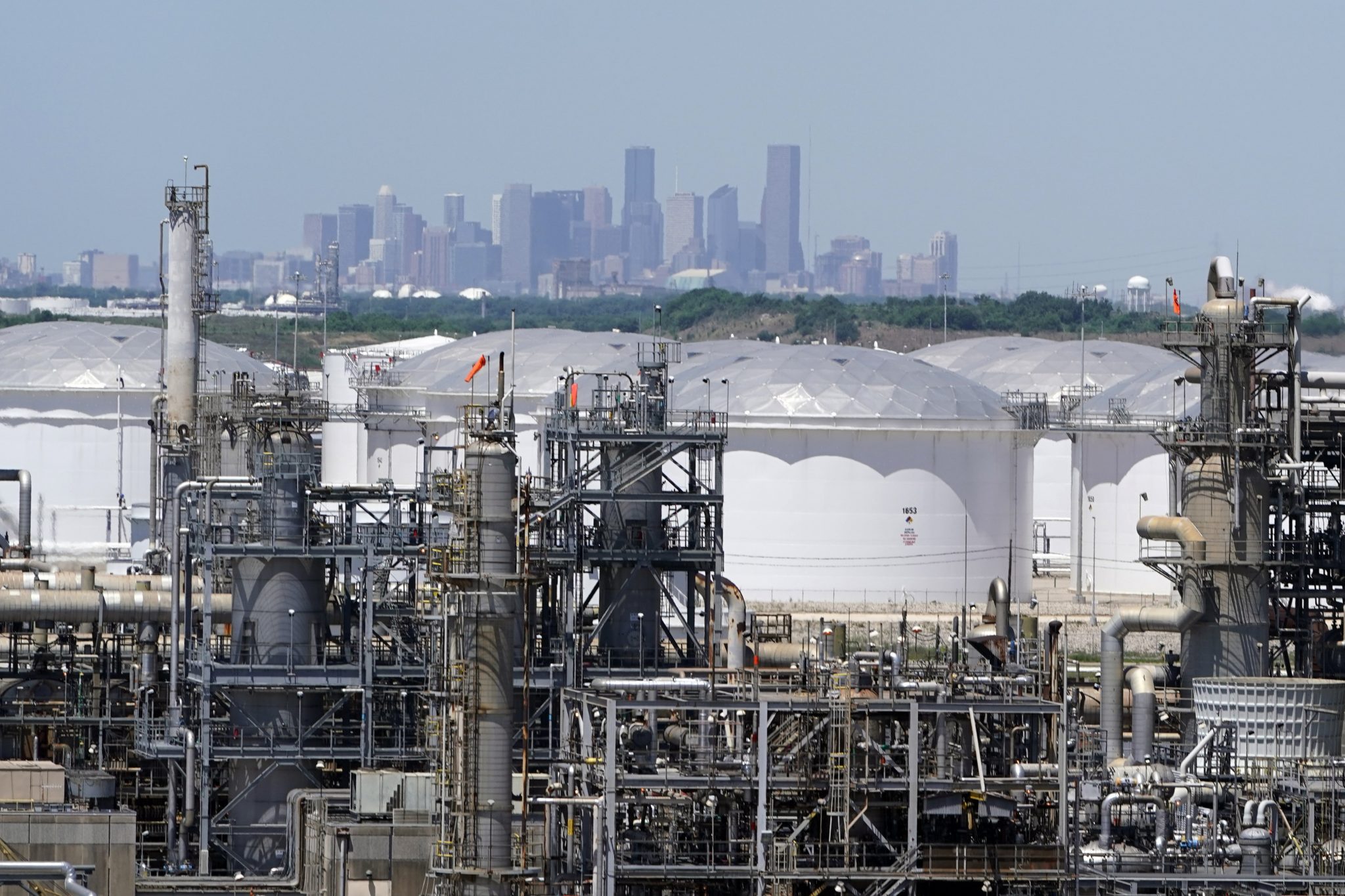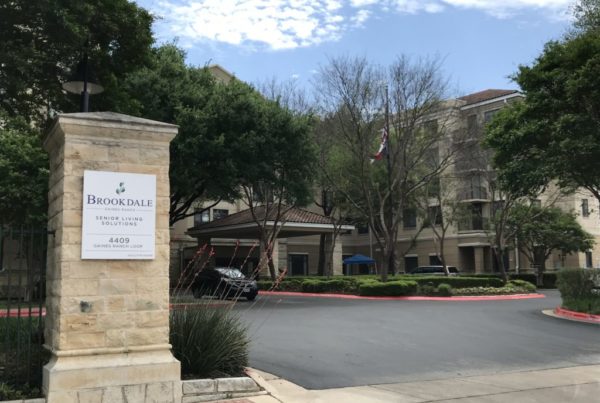The Houston Health Department found elevated levels of formaldehyde, a known carcinogen, in neighborhoods along the Houston Ship Channel, according to a new report released Thursday.
The health department’s report, in conjunction with One Breath Partnership and the Environmental Integrity Project, was the result of continuous air monitoring over a one-year period in three locations along the Ship Channel. It found concentrations of formaldehyde exceeded federal health screening levels at all three locations — meaning an increased cancer risk for residents who live nearby.
“These are the same communities where we see an over-concentration of facilities and bad actors that are operating within these neighborhoods,” said Bakeyah Nelson, the executive director of Air Alliance Houston.
The highest levels were measured at the air monitor in Cloverleaf, where the average annual concentration of formaldehyde was more than 13 times the U.S. Environmental Protection Agency’s chronic health screening level.
The report found that low-income communities of color are most impacted, particularly residents in the neighborhoods of Manchester, Harrisburg, Meadowbrook, Allendale, Northshore and Galena Park.
“It’s yet another piece of evidence that communities of color and working-class neighborhoods are really living with these cumulative risks from multiple pollutants that they’re being exposed to on a daily basis,” Nelson said.
In addition to causing certain types of cancers, formaldehyde can also irritate the eyes, skin, nose and throat.
The research was funded through a grant by the EPA, after the agency’s National Air Toxics Assessment indicated formaldehyde was the main cancer-causing chemical in certain Houston census tracts. Though some state air monitors measure formaldehyde, the health department wanted to conduct further targeted research to fully understand the scope and the sources of formaldehyde, according to Loren Hopkins, chief HHD environmental science officer.
“What this investigation did was provide a lot more hourly data in this area that we were worried about because of the National Air Toxics Assessment indicating that it was at elevated risk for cancer, based on formaldehyde,” she said.
Though some facilities do emit formaldehyde directly, previous research has found 95% of the formaldehyde in Houston’s air is formed by other chemicals reacting together, Hopkins said — some of which are not toxic on their own.
On top of that, formaldehyde can then react with other chemicals in the air to form ozone smog, which is itself a health hazard that can make it more difficult to breathe and increase the frequency of asthma attacks.
“What we have is chemicals that are really not a health concern by themselves come together to form formaldehyde, which causes cancer. And then formaldehyde comes together with other chemicals, which causes ozone,” she said. “If we can just start with that one seemingly innocuous pollutant and control that, we can do so many more things in protecting the health of the community.”
Formaldehyde precursors include ethylene, isoprene, propylene and other volatile organic compounds. Along the Ship Channel, these precursor pollutants are primarily coming from petrochemical facilities, according to the report.
Hopkins said she hopes regulators at the state and federal level will use this information to better regulate these precursor pollutants.
“A better understanding of the fact that we are emitting these things that do create formaldehyde, that do pose a risk that is higher than it should be, will help regulators come in and figure out exactly what kinds of rules need to be tightened up so that we can mitigate the risk,” she said.
Ilan Levin, the Texas Director for the Environmental Integrity Project, said at the state level he thinks there are several actions that regulators at the Texas Environmental Quality Commission could take relatively quickly, such as setting emission limits of these precursor pollutants in air permits.
“Now that they know that formaldehyde is a real problem in these communities, we hope that the state will be a little more protective in the permits that they issue,” he said. “Hopefully this is a wake-up call for regulators.”
Hopkins, from the health department, said she also hopes to see it addressed across the country, since any place with a concentration of industrial emissions would likely also see this secondary formation of formaldehyde.
“We can address this locally at the source by trying to really work on these pollutants that are the precursors, but it’s a pretty big problem,” she said. “If we just fix it in Texas it’s a band-aid, and we really need to be thinking about it nationally.”














